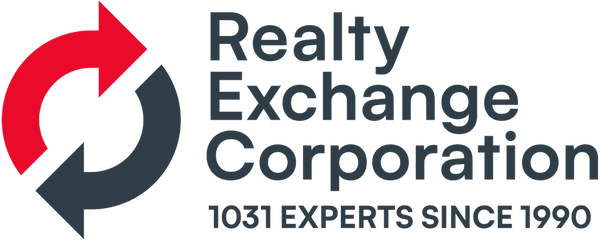By: Ed Horan, Certified Exchange Specialist®
Are you in a situation where you must go to settlement on your investment replacement property but you cannot sell your relinquished property or the buyer is not ready to go to settlement?
Due to the current market we are seeing this situation more often. The answer is the reverse exchange. The value of the reverse exchange is that you may get control of the desired replacement property, even when the relinquished property hasn’t been closed, and still do a 1031 exchange to defer taxes on your gain.
A 1031 exchange only allows a “forward exchange,” i.e., you must sell and close on your relinquished property before you take title to the new replacement property. There is a fundamental rule in the exchange world that you cannot exchange with yourself. If you take title to the new replacement property first, you would own both properties at the same time and, therefore, would not be able to use the replacement property as part of the exchange because you would be buying from yourself.
For a number of years, real estate investors wanted the option to purchase their replacement property before they sold their relinquished property. In 2000, the IRS made this possible by publishing “safe harbor procedures” in IRS Revenue Procedure 2000-37. While the procedure does not permit the taxpayer to take title to the replacement property before transferring title to the relinquished property, it does establish specific procedures to accommodate what is called a reverse exchange. The Revenue Procedure forces a scenario that the investor has transferred the relinquished property and exchanged it for a replacement property – exactly the sequence the 1031 regulations require.
The rules require that the replacement property or the relinquished property be owned and held by the “exchange accommodation titleholder” – called the EAT.
Let’s say our investor needs to go to settlement on a new vacation rental property before he can go to settlement on the investment or business property he is selling. The answer is for the investor to engage a professional EAT to take title and for the EAT to own and operate thereplacement property until the investor can go to settlement on the relinquished property. The investor then purchases the new replacement property from the EAT.
The process starts with a document called a “Qualified Exchange Accommodation Arrangement”– the QEAA. This document spells out the agreement between the EAT and the investor. It also serves as the real estate contract for the purchase by the investor of the replacement property from the EAT.
Normally, the investor already has a real estate contract on the replacement property with the current owner. This contract is assigned by the investor to the EAT, thus making the EAT the purchaser of the replacement property. The EAT will purchase the property using cash loaned by the investor, or the investor will guarantee a loan that is arranged for the EAT. Once the EAT owns the replacement property, it will normally lease the property to the investor and set up a management agreement. While the EAT is the owner, improvements may be made to the property.
To stay within the reverse “safe harbor” rules, the investor must identify within 45 days the relinquished property he plans to use; and no later than 180 days after transfer of ownership to the EAT, the replacement property must be transferred to the investor.
An alternative is for the EAT to purchase and hold the relinquished property. This then permits the investor to purchase the replacement property in the normal sequence. Again the EAT will have the investor continue to manage the relinquished property. When the third party buyer eventually goes to settlement, the property is transferred from the EAT to the buyer. The cash from the buyer received at settlement is used to pay down the loan on the replacement property, or is returned to the investor, as appropriate. The transfer to the buyer must occur within 180 days of when the EAT took title to the relinquished property.
When the investor has a contract on his relinquished property with either an EAT or an outside buyer, he must engage a Qualified Intermediary (QI), like Realty Exchange Corporation. The QI provides the 1031 exchange documentation and control of exchange funds. The regular exchange with the QI and reverse exchange arrangement with the EAT are separate but required steps. The EAT and the QI are normally separate entities but have working agreements to make the whole process go smoothly.
The reverse exchange procedures can solve the problem when you are unable to first get to settlement on the relinquished property but still want to do an exchange. The reverse exchange, by its nature, is more expensive, but it has great value in solving a problem that could otherwise cost you a great deal of taxes.
If you desire a copy of Revenue Procedure 2000-37 or have any questions on like-kind exchanges, e-mail us at bill@1031.us. Previous 1031 exchange articles and the January 2007 edition of ”Reporting the Like-Kind Exchange of Real Estate Using IRS Form 8824” are available on our web site, https://www.1031.us.
Who Qualifies as an EAT?
To accommodate a reverse exchange, investors should use an experienced professional organization that is qualified to serve as an EAT. The EAT is disqualified if it is a related party or someone who has served as the investor’s agent over the past two years. This includes the investor’s attorney, real estate broker, employee or accountant.
– Ed Horan, CES® is Senior Exchange Consultant for Realty Exchange Corporation, Gainesville, VA, and author of How to Do a Like Kind Exchange Using a Qualified Intermediary.
This publication is designed to provide accurate information on tax-deferred exchanges. The publisher is not engaged in rendering legal or accounting services. If legal or tax advice is required, the services of a competent professional should be sought.
